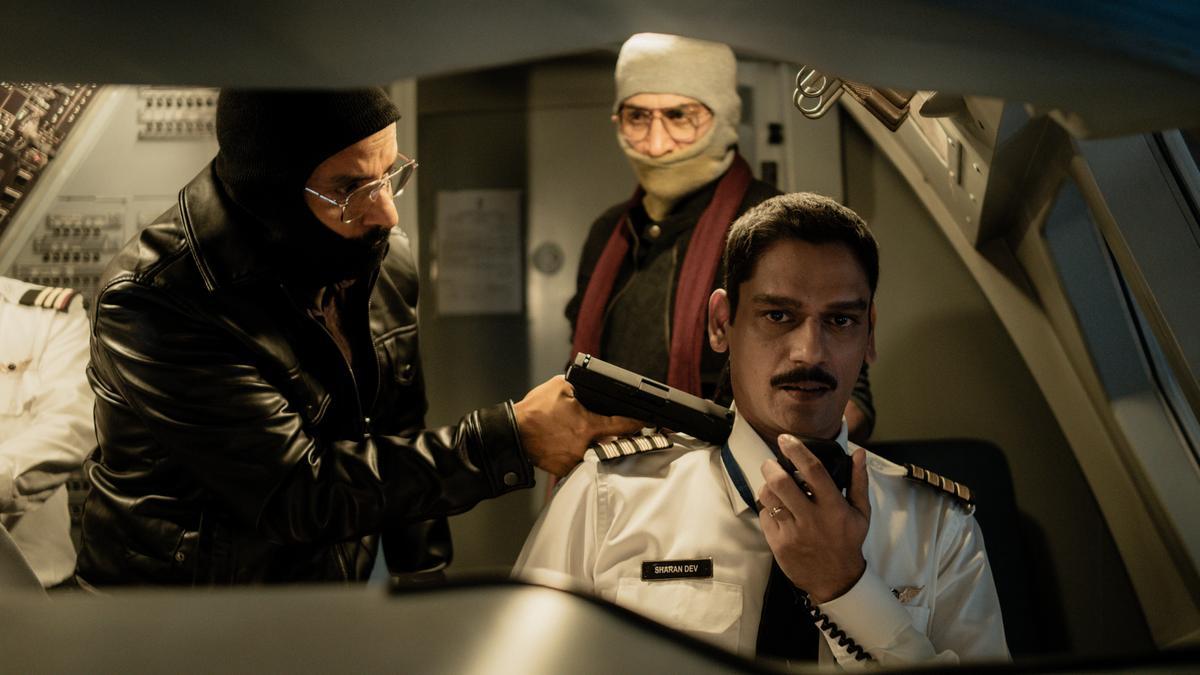
Netflix’s latest web series ‘IC 814: The Kandahar Hijack’ encountered significant backlash earlier this week when numerous social media users voiced their outrage over the names of the four hijackers depicted in the critically-acclaimed series. The controversy has prompted swift action from the authorities, with the Information & Broadcasting Ministry summoning Monika Shergill, the content chief of the OTT platform, to address the issue. Additionally, a public interest litigation (PIL) has been filed in the Delhi High Court by the president of an organization called ‘Hindu Sena’. The litigation contends that the series distorts the religious identities of the hijackers by naming two of the five hijackers as Bhola and Shankar, and it seeks the revocation of the series’ certification.
Directed by Anubhav Sinha, the six-episode series recounts the harrowing hijacking of the IC-814 flight on December 24, 1999. The flight, which had just taken off from Kathmandu, heading towards Delhi, was diverted to Amritsar, Lahore, Dubai, and finally to Kandahar in Afghanistan, then under Taliban control. The crisis lasted six days, culminating in a tense negotiation that saw the Atal Bihari Vajpayee-led NDA government agreeing to release three dangerous terrorists—Masood Azhar, Omar Saeed Sheikh, and Mushtaq Ahmad Zargar—in exchange for the safety of the passengers and crew.
The series sources part of its narrative from ‘Flight To Fear’, a first-hand account penned by the flight’s pilot, Captain Devi Sharan, and journalist Srinjoy Chowdhury. It includes a disclaimer that describes it as a work of fiction inspired by certain real-life events.
The controversy centers around the creative liberties taken by the series’ makers, specifically their decision not to clarify that the hijackers used codenames during the hijacking. This decision has led to misunderstandings and outrage among viewers, who believe the names Bhola and Shankar imply the hijackers were Hindu.
Numerous journalistic accounts from the period confirm that the hijackers used aliases. A Union Home Ministry press release from January 6, 2000, identified the hijackers as Ibrahim Athar, Shahid Akhtar Sayeed, Sunny Ahmed Qazi, Mistri Zahoor Ibrahim, and Shakir. The press release also confirmed that the hijackers used codenames during the ordeal. “To the passengers of the hijacked plane, these hijackers came to be known respectively as (1) Chief, (2) Doctor, (3) Burger, (4) Bhola, and (5) Shankar, the names by which the hijackers invariably addressed one another,” the document stated.
.
This distinction seems to be understood by some of those expressing outrage, who appear more concerned about the potential for historical details to be forgotten over time. Among them, BJP leader Amit Malviya voiced his concern on social media platform X, formerly known as Twitter. He wrote, “The hijackers of IC-814 were dreaded terrorists, who acquired aliases to hide their Muslim identities. Filmmaker Anubhav Sinha legitimized their criminal intent by furthering their non-Muslim names. The result? Decades later, people will think Hindus hijacked IC-814.”
Despite the backlash, it’s worth noting that the series does reveal Chief’s true identity when negotiations hit a stumbling block. In a post on X, journalist Neelesh Misra, who also authored a book on the subject, mentioned that Chief was the brother of Masood Azhar. Within the narrative, Bhola and Shankar play minor roles and are referred to by their codenames only once in the six-episode series.
The controversy over the names highlights the complexities and sensitivities involved in portraying historical events through fictionalized narratives. By blurring the lines between fact and fiction, filmmakers can reignite long-dormant tensions and provoke strong reactions from viewers with deeply held beliefs and memories related to past events.
The debate around ‘IC 814: The Kandahar Hijack’ isn’t just about the names but reflects broader concerns about historical accuracy, artistic freedom, and the potential for misrepresentation. As the series continues to garner attention, it raises pertinent questions about how much creative liberty is acceptable when telling stories based on real-life events, especially those that are still vivid in public memory.
In conclusion, the controversy surrounding ‘IC 814: The Kandahar Hijack’ underscores the delicate balance filmmakers must strike between engaging storytelling and respecting historical truth. As audiences and critics continue to dissect the series, the discourse will likely fuel ongoing discussions about the portrayal of sensitive events in popular media.












